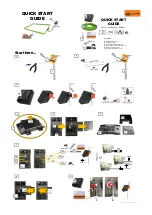
Standard Components
Operation
The Combination Pressure Reducing and Sustaining Automatic Control
Valve (ACV) with Hydraulic Check Feature is designed to automati-
cally reduce a fluctuating higher upstream pressure to a constant lower
downstream pressure regardless of varying flow rates, and will throttle
to sustain a minimum upstream pressure. It is controlled by a normally
open, pressure reducing pilot designed to: 1) Open (allowing fluid out
of the main valve cover chamber) when downstream pressure is below
the adjustable setpoint, and 2) Close (allowing fluid to fill the main valve
cover chamber) when downstream pressure is above the adjustable set-
point. A decrease in downstream pressure causes the valve to modulate
toward an open position, raising downstream pressure. An increase in
downstream pressure causes the valve to modulate toward a closed
position, lowering downstream pressure.
The normally closed sustaining pilot remains open when upstream pres-
sure is above the adjustable setpoint, and modulates toward a closed
position if upstream pressure falls below the setpoint. As the sustaining
pilot closes, fluid is directed into the main valve cover chamber, allow-
ing the valve to modulate toward a closed position, raising upstream
pressure. Normal pressure reducing operation resumes when upstream
pressure is above the sustaining pilot setpoint, and downstream pres-
sure is below the reducing pilot setpoint.
If downstream pressure becomes greater than upstream pressure,
downstream pressure is admitted to the main valve cover chamber,
closing the valve and preventing reversal of flow. Normal backpressure
or sustaining operation resumes when upstream pressure exceeds
downstream pressure.
1
X
X
X
X
Y/FC
P/L
2
4
3
AOS
5
4
CLOSES VALVE
OPENS VALVE
FLOW
1. Prior to installation, flush line to remove debris.
2. Install valve so the flow arrow matches flow through the line, and gauges to monitor valve inlet and outlet pressures. A Position Indicator
can be installed to provide visual indication of valve position and operation without disassembly.
3. Install isolation valves upstream and downstream of the main valve.
4. Open the isolation ball valves in the control tubing if so equipped. Failure to open these will prevent the valve from functioning properly.
Note:
If using butterfly valves, ensure valve disc does not contact the main valve.
5. Provide adequate clearance for valve servicing and maintenance. Refer to valve servicing dimensions on next page.
6. Avoid installing valves 6" and larger in the vertical position (main valve stem horizontal). Automatic Control Valves (ACVs) are designed for
horizontal in-line installation, with the cover facing up (main valve stem vertical). Slow operation or premature stem and guide wear may
occur if valve is not installed according to factory recommendations. Consult factory for detailed engineering review prior to ordering if
valve is to be installed other than horizontally in-line.
7. If valve is equipped with a pilot control system, extra precautions should be made during installation to protect the piping circuit from dam-
age. Only remove the pilot control system from the valve if necessary. Tubing and fittings should be kept clean and replaced exactly as
removed. Consult appropriate hydraulic schematic to ensure proper re-assembly.
8. After installation, vent entrapped air from valve cover and pilot system by following instructions on Technical Bulletin.
Start-up of an automatic control valve requires that proper procedures be followed. Time must be allowed for the valve to react to
adjustments and the system to stabilize. The objective is to bring the valve into service in a controlled manner to protect the system
from damaging over-pressure.
1 – Main Valve (905GD - Single Chamber)
2 – Pressure Reducing Control
3 – Pressure Sustaining Control
4 – Check Valve
5 – Fixed Orifice
X – Isolation Cocks
Installation
912GD-01 (Globe) Pressure Reducing and Sustaining Control
Valve with Hydraulic Check Feature
2 IOM-A-ACV-912-01_612-01 2115
EDP# 1917032
© 2021 Watts






























